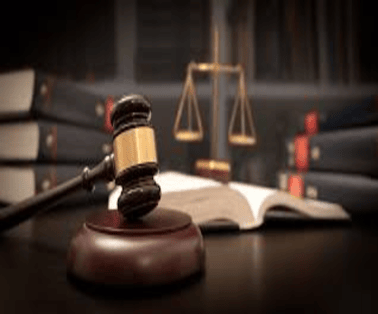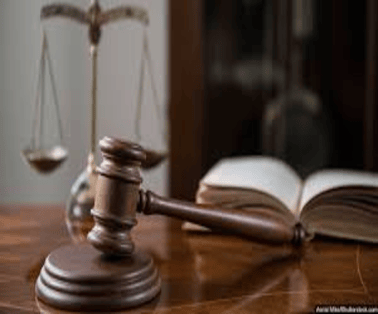In a landmark judgment, the Supreme Court of India overturned its own previous decision that directed the Delhi Metro Rail Corporation (DMRC) to pay nearly ₹8,000 crore to Delhi Airport Metro Express Private Limited (DAMEPL), a company owned by Reliance Infrastructure. This rare reversal came through a curative petition, making headlines for correcting what the court termed a “fundamental error.”
Key Points
- In 2008, the DMRC entered into a public-private partnership with DAMEPL, a consortium led by Reliance Infrastructure Ltd, for the construction, operation, and maintenance of the Delhi Airport Metro Express.
- While DMRC acquired the land and bore the cost of construction, the consortium was to design, install, and commission the railway systems in two years.
- Thereafter, until 2038, DAMEPL was to maintain the line and manage its operations, while paying a “concession fee” to DMRC.
- However, a year after the line became operational, the consortium asked DMRC if it could defer payment of the concession fee.
- Among the reasons cited were delays in providing access to the stations by DMRC, and that retail activity had not picked up on the line. This triggered a dispute between the consortium and the Union Ministry of Urban Development.
- Subsequently, barely a year into its operations, the line was shut following a complaint from DAMEPL that it was “unsafe to operate”.
- The consortium triggered a termination of its agreement alleging there were technical problems in the civil structure of the Metro corridor, for which DMRC was responsible as per the agreement.
- While the line started functioning again, the government and Reliance began a battle before an arbitration tribunal for losses due to cancellation of the agreement
Rulings of courts
- In 2017, the panel of three arbitrators decided in favour of Reliance and ordered DMRC to pay nearly Rs 8,000 crore.
- The government then moved an appeal before a two-judge (division) Bench of the High Court. In 2019, the division Bench overturned the arbitral award, ruling in favour of DMRC.
- This led DAMEPL to approach the Supreme Court against the High Court verdict. The SC heard the case, and in September 2021 reversed the HC verdict.
- In November 2021, the SC dismissed a review petition against its judgment. Almost eight months later, DMRC filed a curative writ petition, the last resort to correct a judgment of the Supreme Court.
What Is a Curative Petition?
- It is the final and last option for the people to acquire justice as mentioned and promised by the Constitution of India. It is a way to ask the court to review and revise their own decision and it is filed after a review petition is dismissed or used.
- It is meant to ensure there is no miscarriage of justice and to prevent abuse of process.
- It is a judicial innovation, designed for correcting “grave injustices” in a ruling of the country’s top court.
- Principles governing curative petitions were established by the Supreme Court in the case of Rupa Ashok Hurra Vs Ashok Hurra & another Case, 2002.
Grounds for Filing a Curative Petition
- Curative petitions are not for everyone, and the Supreme Court has set strict criteria to ensure they are used judiciously. To be considered, the petitioner must establish two key points:
- Violation of Natural Justice Principles: This means the petitioner must prove a genuine violation of fair court procedures happened during their case. Examples include not being given a chance to be heard by the court, not being presented with relevant evidence, or facing procedural irregularities.
- Judicial Bias: The petitioner needs to provide evidence suggesting that a judge’s bias negatively impacted the case. This could involve the judge having a personal connection to the opposing party or a financial interest in the case’s outcome.
Who Hears It?
- A special bench is constituted to handle curative petitions, ensuring experienced judges review these exceptional cases:
- A bench of the three most senior judges, along with the original judges (if available), initially reviews the petition. They assess whether the petition meets the criteria and warrants further consideration.
- Only if a majority of the judges on the initial review bench agree that the matter needs a hearing, is the petition listed for a hearing. Ideally, the hearing would take place before the same bench that conducted the initial review.
- Decisions on curative petitions are typically made in chambers (the judge’s private workspace) unless an open hearing is specifically requested.
- The court can seek assistance from a senior lawyer (amicus curiae) during the consideration process. This allows the court to access additional legal expertise on complex issues raised in the petition.
- If the bench determines that the petition lacks merit and is vexatious, it may impose exemplary costs on the petitioner
Previous Use of Curative Petitions
- Curative writs are filed mostly in death penalty cases.
- The SC in the Yakub Memon case (2015) and the Delhi gang rape convicts case (2020) dismissed curative writs challenging death sentences.
- In 2023, in the Bhopal gas tragedy case, the SC refused to exercise its curative powers to enhance the compensation provided to victims that was deemed grossly inadequate.
- Article 136 of the Indian Constitution grants the Supreme Court the power to grant special leave to appeal from any judgement, decree, or order made by any court or tribunal in India.
- The Supreme Court has advisory jurisdiction under Article 143 of the Constitution, where the President of India can refer specific matters to the Court for its opinion.
- Article 145 gives the Supreme Court authority, with the President’s approval, to make rules for regulating the practice and procedure of the Court, including rules for persons practising before the Court, hearing appeals, enforcing rights, and entertaining appeals
To Download Monthly Current Affairs PDF Click here
Click here to get a free demo
Discover all about CLAT Exam



